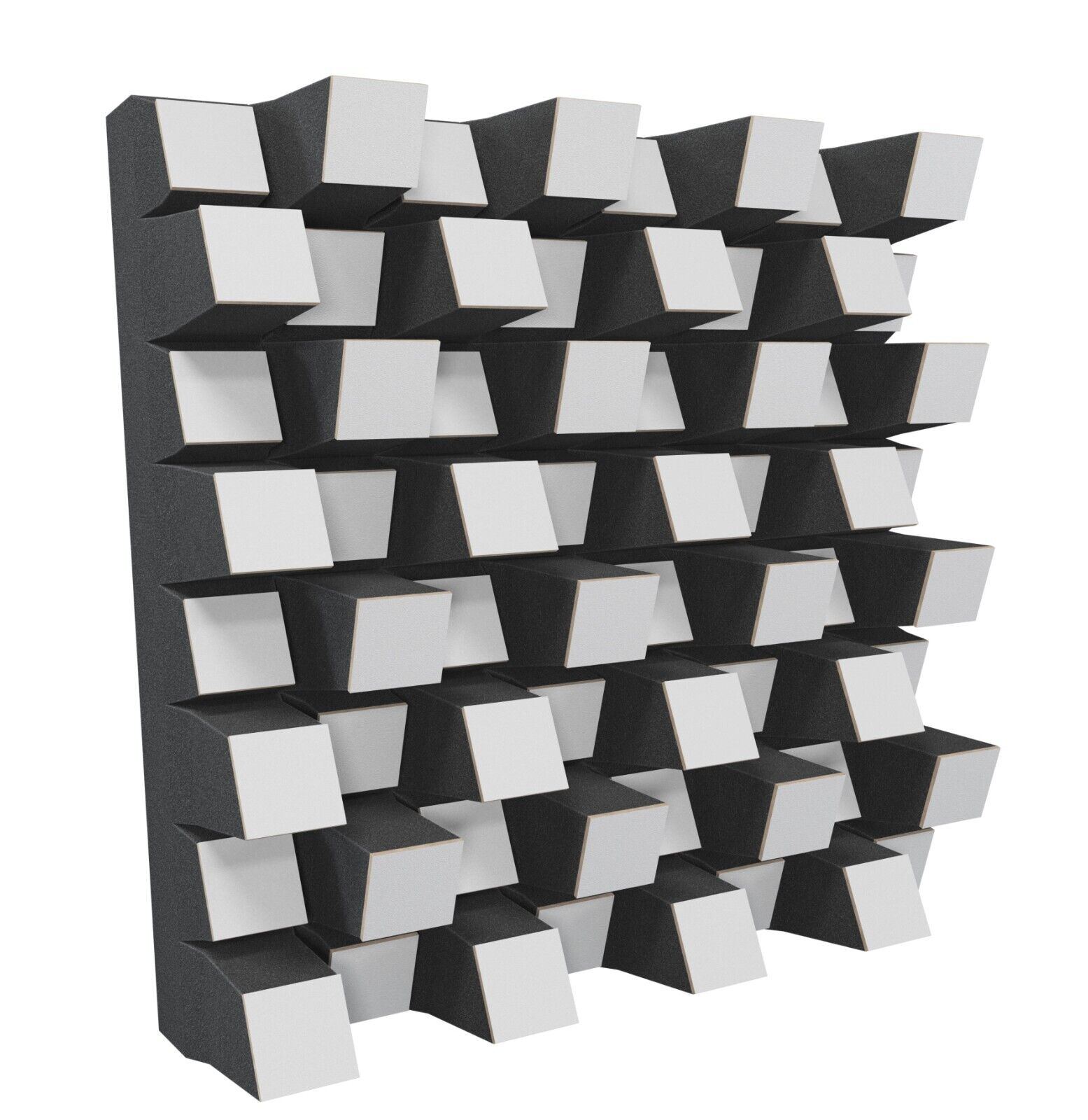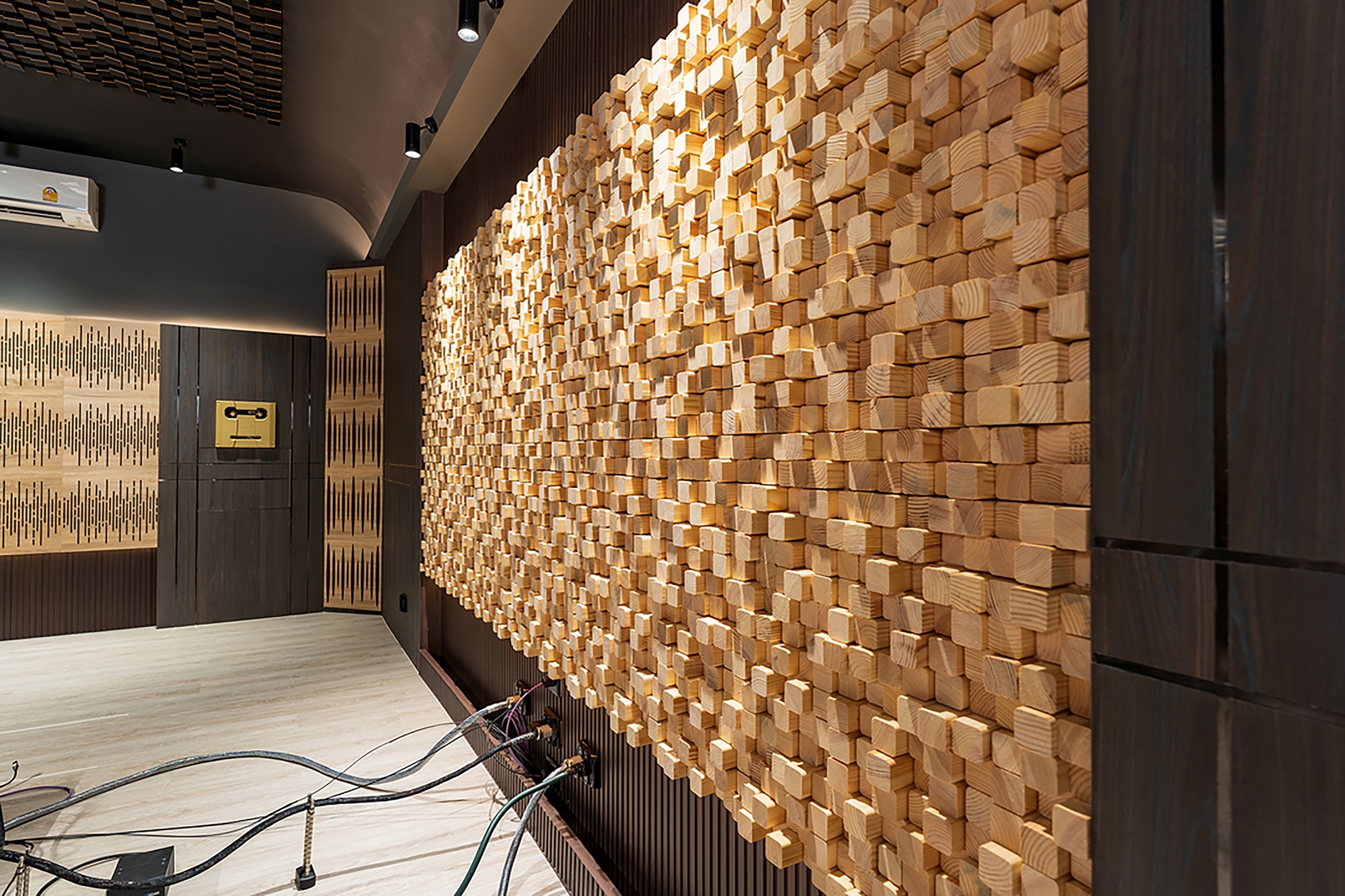Sound diffusers – Improve acoustics with the right sound distribution
Sound problems often arise in rooms where sound waves are reflected unevenly, which can create disturbing reverberation, unbalanced sound amplification, and sound distortion. A sound diffuser, also known as an acoustic diffuser, is an acoustic solution that spreads sound waves evenly throughout the room, creating a more balanced and natural sound image.
Unlike sound absorbers, which capture and reduce sound levels, sound diffusers work by reflecting and distributing sound in multiple directions. This makes them particularly valuable in environments where clear and even sound reproduction is crucial, such as recording studios, conference rooms, theaters, concert halls, and home theater systems.
Why do you need a sound diffuser?
In many environments where sound quality is important, reflective surfaces create uneven sound distribution. This can lead to problems such as:
Excessive reverberation
Sound bounces back and forth uncontrollably, creating unclear and messy sound.
Imbalance in the sound image
Some frequencies are amplified while others are attenuated, making the sound seem uneven.
Difficulty perceiving speech and music
Unclear reflections make it difficult to understand conversations or enjoy sound reproduction.
A sound diffuser helps break up sound waves and spread them more evenly throughout the room, resulting in clearer, more natural, and balanced sound.
How does a sound diffuser work?
Sound diffusers are designed to reflect sound waves in a controlled manner, reducing harsh echoes and uneven sound reflections. This distinguishes them from sound absorbers, which instead capture sound to reduce the sound level.
Sound diffusers are often used to:
- Reduce unwanted reverberation without eliminating sound energy.
- Evenly distribute sound waves over a wider area and create a more dynamic sound image.
- Prevent certain frequencies from being amplified at the expense of others, making the sound more balanced and natural.
Many recording studios and home theater systems combine sound diffusers and sound absorbers to create an optimal sound environment where unwanted reflections are controlled, while preserving the energy of the sound for a more vivid and natural acoustics.
Where are sound diffusers used?
Sound diffusers are an important part of acoustic optimization in several different environments:
Recording studios
Creates neutral and accurate sound reproduction by eliminating harsh reflections.
Home theater & Hi-Fi rooms
Provides a more dynamic and natural sound image for a better movie and music experience.
Conference rooms and office environments
Improves speech intelligibility by reducing disruptive sound distortion.
Restaurants and public environments
Creates even sound distribution, allowing sound to spread smoothly throughout the room.
Theaters and concert halls
Improves the sound experience for both audiences and performers by reducing unwanted echoes.
By using sound diffusers in strategic locations, you can improve sound comfort and ensure pleasant, balanced acoustics regardless of the environment.
Materials and design – Customize as needed
Sound diffusers come in different shapes and materials to suit both aesthetic and acoustic requirements. Common variants include:
Diffusers with three-dimensional patterns
Effective at breaking up sound waves and dispersing them in multiple directions.
Wood or foam diffusers
Used to create softer sound diffusion in homes and offices.
Modular systems
Flexible solutions that can be adapted to the specific needs of the room.
The choice of sound diffusers should be adapted to the size of the room, acoustic needs, and aesthetic preferences to achieve the best possible results.
Sound diffusers and sound absorbers – the perfect combination
Sound diffusers and sound absorbers are often used together to create an optimal sound environment.
- Sound absorbers are strategically placed to reduce reverberation and control background noise.
- Sound diffusers are used to distribute sound evenly and maintain natural sound energy.
Recording studios often use a balanced combination of both, with sound absorbers placed to control the sound level while diffusers ensure a lively and clear sound image.
Improve sound with sound diffusers
Using sound diffusers is an effective method for creating balanced, natural, and pleasant acoustics. By reducing harsh reflections and evenly distributing sound throughout the room, you can improve sound quality in everything from recording studios and home theater systems to conference rooms and public spaces.








